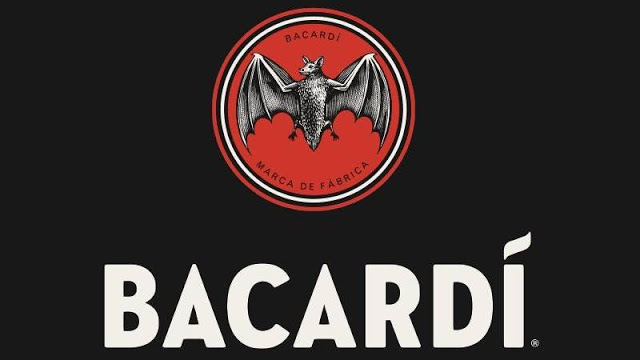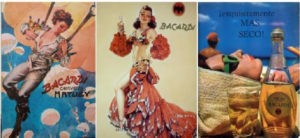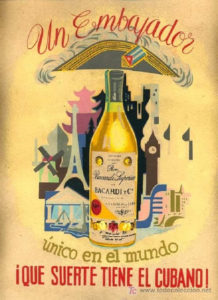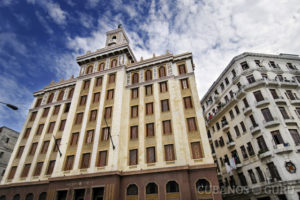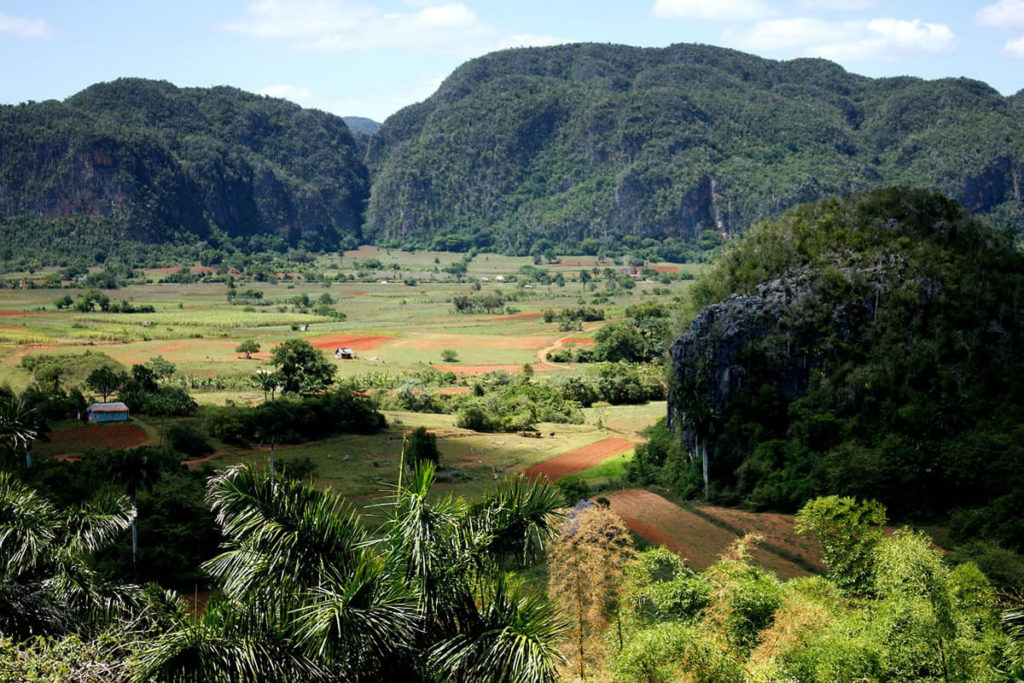BACARDI, THE CUBAN BRAND OF RUM THAT SELLS THE MOST IN THE WORLD. PHOTOS.
In Cuba, rum, that alcoholic drink that we associate with pirates, mojito, and daiquirí, with the extermination of its cuban original inhabitants, around the 16th century, and with the arrival of the black slaves uprooted from their lands, is when the history of the rum emergent. It is said that the slaves used to drink what they called “guarapo”, obtained from the fermentation of yucca and corn. Then, they went on to extract the juice from the sugar cane, which once fermented, gave rise to strong liquor. The liquid was obtained through rudimentary devices, but later the sugar mill was used in sugar mills and power plants; the guarapo was transformed into alcohols, and from them arose the brandy.
Desired for its transparency and pleasant smell, distillation after distillation came to emerge from rum. The “rum” is a distillate of the sugar cane by fermentation and distillation of molasses and that later may or may not be subjected to aging processes, generally in oak barrels.
Rum does have healing properties, as demonstrated at the time by an English missionary named Labat, who assured that after drinking it moderately for some time, this concoction had cured him of malaria. Unfortunately, this event was left in the shadows of another somewhat more negative for the defenders of the virtues of Rum: Labat died sometime later from alcohol intoxication, due to huge drunkenness.
A moral that has been said throughout history and that nobody pays attention to: Everything in excess is bad.
THE RUM BACARDI
Facundo Bacardí Massó, the founder of the company that bears his name, was born in 1814 in Barcelona, the son of a wine merchant, and in 1830 he marched with his family to Cuba, settling in Santiago de Cuba, where he prospered in the same business as his father.
From 1852 he began to experiment with the rum distillation process to obtain a smoother drink until he obtained a satisfactory formula that did not exist in the rum market and also invented a carbon filter system and was the first to age the rum. liquor in oak barrels. For this he acquired an old distillery in Santiago and on February 4, 1862, he founded the Bacardi company where he began to manufacture and sell the new product.
Today, Bacardi is the best-selling rum brand in the world, it is marketed in 150 countries and makes about 20 million dollars in profits per year. Bacardi produces about 80% of the rum consumed in the world, but nevertheless globally occupies the third position in market share as a spirits company, behind the British Diageo and the French Pernod Ricard.
Bacardí fights because in the rum category it does not run the risk of entering the price game and losing value and prestige as at one point happened to tequila in Mexico.
Currently in Puerto Rico, only the rum consumed on the island is bottled, while in Jacksonville, Florida the same is done with that consumed in the United States, and in Spain that consumed in Europe, where its sale is declining. However, Puerto Rico produces 83 percent of all Bacardi and 16 percent in Mexico.
But in Cuba, where Bacardi rum was born and became world-famous, not a drop of this liquor is sold. Bacardi won international awards after 1900 and soon became the rum that made Cuba famous for its sugar, tobacco, and rum.
Bacardi was the first Cuban multinational, after inaugurating a bottling plant in Barcelona (Spain) in 1910. In 1936, Bacardi established a distillery in Puerto Rico to avoid paying tariffs on the rum it shipped to the United States.
In the 20th century, under the leadership of two business leaders, Enrique Schueg and José Pepín Bosch, it consolidated itself as the largest and most important Cuban firm on the island and expanded internationally. They had the vision of bringing production first to Puerto Rico and then to Mexico, which was their salvation when Fidel Castro took power.
In some way, these decisions influence the continuity of the company and the brand, which was nationalized by the Castro revolution. The international headquarters of this company is in Bermuda, but it also has offices in Mexico, Miami, and Puerto Rico. The company moved its operations to Puerto Rico, where it has the largest rum distillery in the world. Although most of the operations are still centered in Puerto Rico, the corporate headquarters (and headquarters) are located in Bermuda where it was registered as Bacardi Limited and in Mexico, it has a large plant in Tultitlán Estado de México.
It continues to be a family and private corporation. In 2004, the company’s profits were approximately US $ 3.3 billion. Its current president is Facundo Bacardí, the founder’s great-great-grandson, born in the United States and who is more American than Cuban. History has made one of the most patriotic families that made Cuba famous and rooted in Cuban life lose its roots.
BACARDI, LA MARCA CUBANA DE RÓN MAS VENDIDA EN EL MUNDO
En Cuba el Ron, esa bebida alcohólica que relacionamos con los piratas, el mojito y el daiquirí, cuentan que con el exterminio de sus habitantes originales, hacia el siglo XVI, y con la llegada de los esclavos negros arrancados de sus tierras, comenzó la historia del surgimiento del ron. Se dice que los esclavos acostumbraban a beber lo que llamaron “guarapo”, obtenido de la fermentación de la yuca y el maíz. Luego, pasaron a extraerle el jugo a la caña de azúcar, que una vez fermentada, daba origen a un licor fuerte. El líquido se obtenía a través de rudimentarios aparatos, pero más tarde se utilizó el trapiche en ingenios y centrales; el guarapo se transformó en alcoholes y de ellos surgió el aguardiente.
Apetecido por su transparencia y agradable olor, destilación tras destilación vino a surgir el ron. El “ron” es un destilado de la caña de azúcar por fermentación y destilación de la melaza y que posteriormente puede o no estar sometido a procesos de añejamiento, generalmente en barricas de roble.
El Ron efectivamente posee propiedades curativas, ya que así lo demostró en su momento un misionero inglés llamado Labat, que aseguró que tras beberlo de forma moderada durante algún tiempo, este brebaje lo había curado de la malaria. Lamentablemente este acontecimiento quedó a las sombras de otro un tanto más negativo para los defensores de las virtudes del Ron: Labat murió un tiempo más tarde por intoxicación etílica, debido a una descomunal borrachera.
Una moraleja que se ha dicho a lo largo de la historia y que nadie le hace caso: Todo en exceso es malo.
EL RON BACARDI
Facundo Bacardí Massó, fundador de la empresa que llevo su nombre nació 1814 en Barcelona, hijo de un comerciante de vinos y es en 1830 cuando el marchó con su familia a Cuba estableciéndose en Santiago de Cuba, donde prosperó en el mismo negocio que su padre.
Desde 1852 comenzó a experimentar con el proceso de destilación del ron para obtener una bebida más suave, hasta que obtuvo una fórmula satisfactoria y que no existía en el mercado de rones y además inventó un sistema de filtro con carbón y fue el primero en añejar el licor en barriles de roble. Para ello adquirió una antigua destilería en Santiago y el 4 de febrero de 1862 fundó la empresa Bacardí donde comenzó a fabricar y vender el nuevo producto.
Hoy, Bacardí es la marca de ron más vendida en el mundo, se comercializa en 150 países y obtiene unos 20 millones de dólares en ganancias al año. Bacardí produce cerca del 80% del ron que se consume en el mundo, pero sin embargo a nivel global ocupa la tercera posición en cuota de mercado como compañía de licores, detrás de la británica Diageo y la francesa Pernod Ricard.
Bacardí lucha porque en la categoría de rones no corra el riesgo de entrar en el juego de precios y pierda valor y prestigio como en un momento dado le ocurrió al tequila en México.
Actualmente en Puerto Rico se embotella solamente el ron que se consume en la isla, mientras que en Jacksonville, Florida se hace lo mismo con el que se consume en Estados Unidos, y en España el consumido en Europa, donde su venta está en descenso. Sin embargo en Puerto Rico se produce el 83 por ciento de todo el Bacardí y el 16 por ciento en México.
Pero en Cuba, donde nació y se hizo famoso mundialmente el ron Bacardí, no se vende ni una gota de este licor. Bacardí ganó premios internacionales después de 1900 y pronto se convirtió en el ron que hizo a Cuba famosa por su azúcar, su tabaco y su ron.
Bacardí fue la primera multinacional cubana, tras inaugurar una planta embotelladora en Barcelona (España) en 1910. En 1936, Bacardí estableció una destilería en Puerto Rico para evitar el pago de aranceles sobre el ron que enviaba a Estados Unidos.
En el siglo XX, bajo el liderazgo de dos lumbreras de los negocios, Enrique Schueg y José Pepín Bosch, se consolidó como la firma cubana más grande e importante de la isla y se expandió internacionalmente. Ellos tuvieron la visión de llevar la producción primero a Puerto Rico y luego a México, lo que supuso su salvación cuando Fidel Castro tomó el poder.
De alguna forma estas decisiones influyen en la continuidad de la compañía y de la marca, la que fue nacionalizada por la revolución castrista. La sede internacional de esta empresa está en Bermudas, pero también tiene oficinas en México, Miami y en Puerto Rico. La compañía trasladó sus operaciones a Puerto Rico, donde tiene la destilería de ron más grande del mundo. Aunque la mayoría de las operaciones todavía se centran en Puerto Rico, las oficinas centrales (y la sede social) de la corporación se ubican en las Bermudas donde se registró como Bacardi Limited y en México tiene una gran planta en Tultitlán Estado de México.
Continúa siendo una corporación familiar y privada. En 2004, los beneficios de la compañía fueron aproximadamente de 3.300 millones de dólares estadounidenses. Su actual presidente es Facundo Bacardí, tataranieto del fundador, nacido en Estados Unidos y que es más norteamericano que cubano. La historia ha hecho que una de las familias más patrióticas, que hicieron famosa a Cuba y enraizadas en la vida cubana haya perdido sus raíces.
Agencies/ MemoriasCubanas/ Carlos RodriguezB. / Internet Photos/ Arnoldo Varona/ www.TheCubanHistory.com
THE CUBAN HISTORY, HOLLYWOOD.



 BACARDÍ, the Cuban Brand of Rum that Sells the Most in the World. * BACARDÍ, la Marca Cubana de Ron Más Vendida en el Mundo. PHOTOS.
BACARDÍ, the Cuban Brand of Rum that Sells the Most in the World. * BACARDÍ, la Marca Cubana de Ron Más Vendida en el Mundo. PHOTOS.